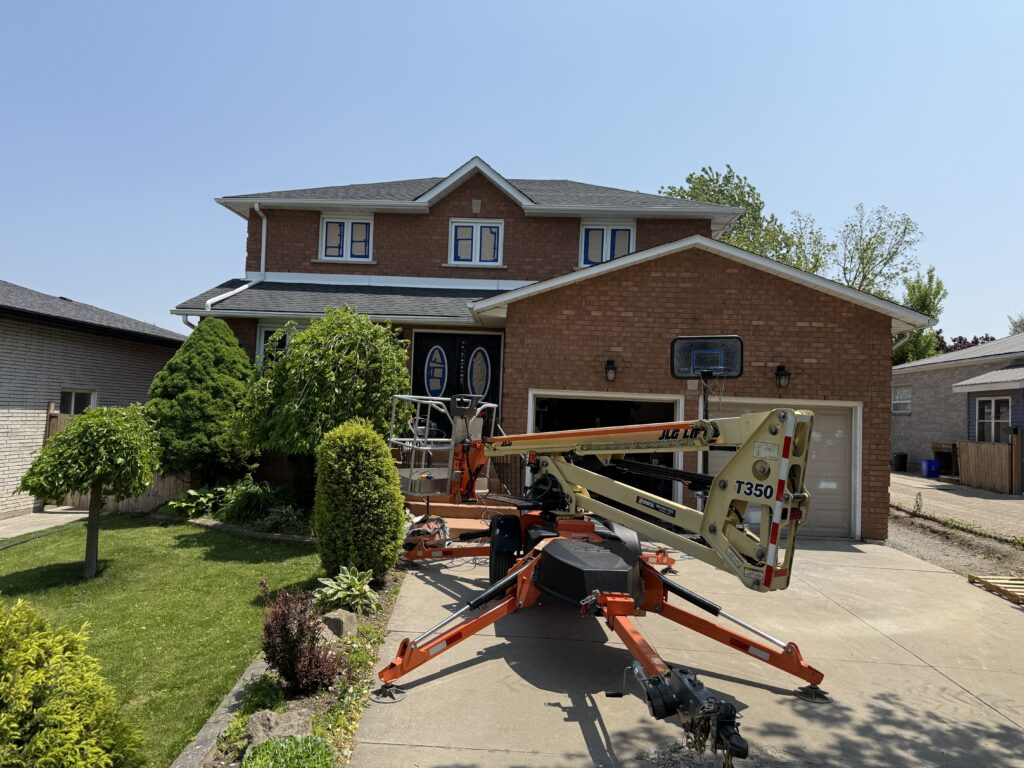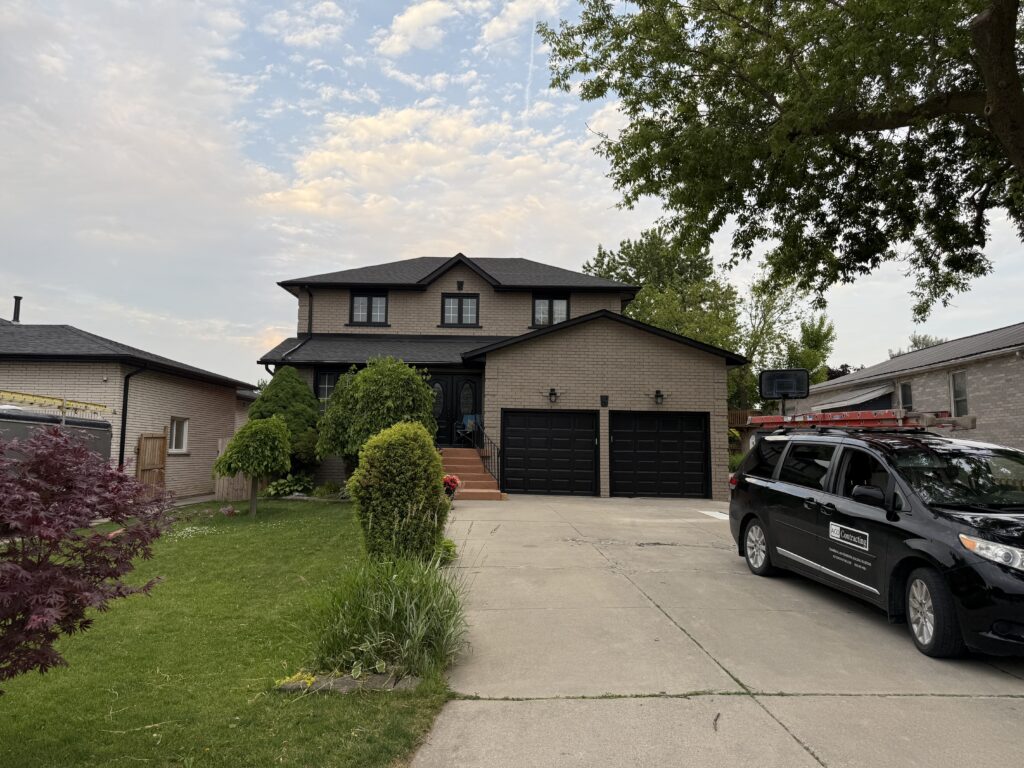Choosing the Right Paint for Every Surface
Painting the exterior of your house is a transformative project that not only enhances curb appeal but also protects your home from the elements. Choosing the right paint for each surface is crucial to achieving a durable and attractive finish, whether you’re tackling vinyl, brick, or stucco. For homeowners and DIY enthusiasts, making informed decisions about materials like vinyl safe paints or Sherwin Williams’ Loxon primer can make all the difference between a stunning transformation and a costly mistake. In this guide, we’ll walk through the best practices for exterior house painting, including expert tips on achieving an even paint finish and selecting the best products for each specific surface. Let’s dive into the world of exterior painting and discover how to make your home the envy of the neighborhood. For more detailed information on exterior painting techniques, check out Sherwin-Williams’ exterior painting how-tos.
Choosing the Right Paint for Vinyl
When it comes to exterior house painting, vinyl siding presents unique challenges. Selecting the appropriate paint is crucial to avoid warping and ensure a lasting finish. Let’s explore the best options for painting vinyl siding.
Best Paint for Vinyl Siding
Choosing the best paint for vinyl siding is essential for a successful exterior painting project. The right paint will adhere properly, resist fading, and protect your home’s exterior for years to come.
For optimal results, look for paints specifically formulated for vinyl siding. These paints are designed to bond well with the vinyl surface and withstand the expansion and contraction that occurs with temperature changes.
Acrylic latex paints are often recommended for vinyl siding due to their durability and flexibility. They provide excellent coverage and are resistant to cracking and peeling.
When selecting a color, stick to shades similar to or lighter than the original siding color to prevent heat absorption that could lead to warping.
Vinyl Safe Paints Explained
Vinyl safe paints are specially formulated to adhere to vinyl siding without causing damage. These paints are designed to be flexible and durable, accommodating the natural expansion and contraction of vinyl siding due to temperature fluctuations.
The key feature of vinyl safe paints is their ability to resist warping. Traditional paints can trap heat, causing the vinyl to buckle or melt. Vinyl safe paints reflect more heat, keeping the siding cooler and maintaining its structural integrity.
Most major paint manufacturers offer vinyl safe paint options. When choosing a brand, look for products that explicitly state they are safe for use on vinyl siding. Sherwin-Williams offers a range of vinyl-safe options that provide excellent coverage and durability for vinyl surfaces.
Painting Brick Surfaces
Painting brick can dramatically transform the look of your home’s exterior. However, it requires specific products and techniques to ensure a durable and attractive finish. Let’s delve into the best practices for painting brick surfaces.
Sherwin Williams Products for Brick
When it comes to painting brick, Sherwin-Williams offers high-quality products designed specifically for this challenging surface. Their Loxon system is particularly effective for brick and other masonry surfaces.
The process typically begins with Loxon Concrete & Masonry Primer. This product is designed to penetrate and seal the porous surface of brick, creating an ideal base for paint adhesion.
After priming, Loxon XP is an excellent choice for the topcoat. This elastomeric coating is highly durable and provides excellent protection against moisture and weathering. It’s also breathable, allowing moisture vapor to escape from the brick.
For best results, always follow the manufacturer’s instructions regarding application methods and drying times between coats.
Achieving an Even Paint Finish
Achieving an even paint finish on brick requires careful preparation and application techniques. The textured surface of brick can make it challenging to get a uniform look, but with the right approach, you can achieve professional-looking results.
- Clean the brick thoroughly to remove dirt, dust, and any loose mortar.
- Repair any damaged areas and ensure the surface is completely dry before painting.
- Apply primer using a roller or sprayer, making sure to work it into all the nooks and crannies.
For the most even finish, spray painting is often the preferred method. It allows the paint to penetrate all the brick and mortar joints, resulting in a smooth, uniform appearance.
When spraying, use a consistent motion and overlap each pass slightly to ensure full coverage. Follow up with a roller if needed to work the paint into the surface and eliminate any drips or uneven areas.


Mastering Stucco Painting
Painting stucco requires a unique approach due to its textured surface and porous nature. Proper preparation and product selection are key to achieving a beautiful, long-lasting finish on stucco exteriors.
Primer for Stucco Surfaces
Selecting the right primer is crucial when painting stucco surfaces. A high-quality primer helps seal the porous stucco, prevents moisture penetration, and provides a uniform base for the topcoat.
For stucco, look for primers specifically designed for masonry surfaces. These primers are formulated to penetrate and bond with the stucco, creating a strong foundation for the paint.
Acrylic primers are often recommended for stucco due to their excellent adhesion and flexibility. They can help bridge small cracks and provide a consistent surface for the paint to adhere to.
Before applying primer, ensure the stucco surface is clean, dry, and free of any loose material. Apply the primer evenly, working it into all the nooks and crannies of the textured surface.
Ensuring a Uniform Finish
Achieving a uniform finish on stucco can be challenging due to its textured surface. However, with the right techniques, you can create a smooth, even appearance that enhances your home’s exterior.
Start by thoroughly cleaning the stucco surface and repairing any cracks or damaged areas. Once the surface is prepared, apply the primer evenly using a roller or sprayer designed for textured surfaces.
When it comes to the topcoat, elastomeric paints are often recommended for stucco. These paints are flexible and can help bridge small cracks, providing excellent protection against moisture.
For the most uniform finish, consider using a sprayer to apply the paint. This method allows for even coverage and helps the paint penetrate into all the surface irregularities. Follow up with a roller if needed to work the paint into the texture and ensure complete coverage.
Remember to apply multiple thin coats rather than one thick coat for the best results. This approach helps prevent drips and ensures a more even finish across the entire surface.

